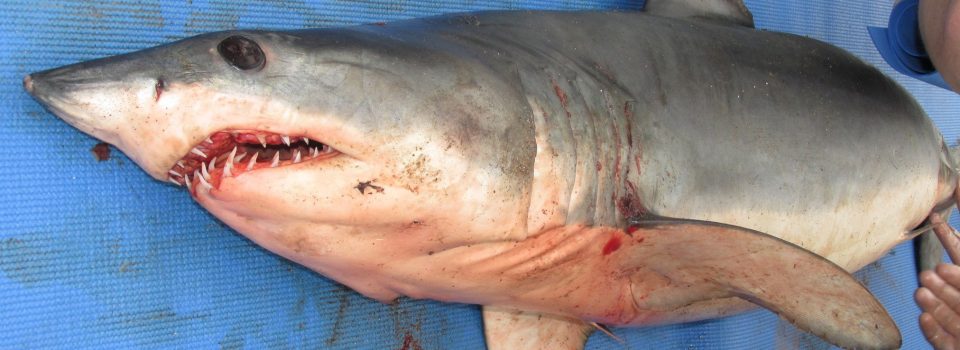Chile is pioneering utilizing iSharkFin program as a tool for identifying sharks
July 25th, 2016 This is new pioneering software just launched in the world. Chile is one of the top five countries using this program; this is why FAO is very interested about the utilization progress of the program in our country.
This is new pioneering software just launched in the world. Chile is one of the top five countries using this program; this is why FAO is very interested about the utilization progress of the program in our country.
At Campus Huayquique, of Universidad Arturo Prat in Iquique, CITES training course on Identification shark fins of iSharkFin program was carried out; this was organized by CITES Chile and the Sharks Working Group of technical-scientific committee of Subsecretaría de Pesca.
Patricio Barria, marine biologist of IFOP said “the main objective of the course was to train the staff of Instituto de Fomento Pesquero and Servicio Nacional de Pesca y Acuicultura personnel on identifying shark fins, which are landed in ports and disembarking centers, to improve official statistics. Additionally correct the information obtained from the processing plants.”
A total of 45 people participated in the course, from Servicio Nacional de Pesca y Acuicultura institution, together with researchers from the Universidad Arturo Prat, Universidad of Concepcion, Universidad Catolica del Norte. The topics discussed were: external anatomy of sharks and their nomenclature; description and instruction on how to take scientific photographs of shark’s anatomy; collection of morphometric data from shark fins for identification; use of iSharkFin program as a tool for identifying sharks; discuss its advantages and disadvantages for field work. ”
Antonio Palma of Servicio Nacional de Pesca said “iSharkFin” is a computer program developed by FAO, which has the attribute that through electronic photographs of fins, both pectoral and dorsal, the program can identify species very quickly, the picture quality must have certain traits of sharpness and that what was taught during the course.
Because of this, the use of camera and notebook is being encouraged in scientific observers, in order the use of program could be effective, however, FAO is working in the program utilization to be more practical in a Tablet, and so, by means of a photo, you can work in the field more quickly.
Finally, Barria mentioned that “with the information collected by scientific observers, technical and researchers of IFOP at ports, landing centers and on board scientific and fishing vessels, a shark photographic data base will be conformed, which will help to identify these species and will improve the scientific information of the Pacific south eastern Ocean.”
